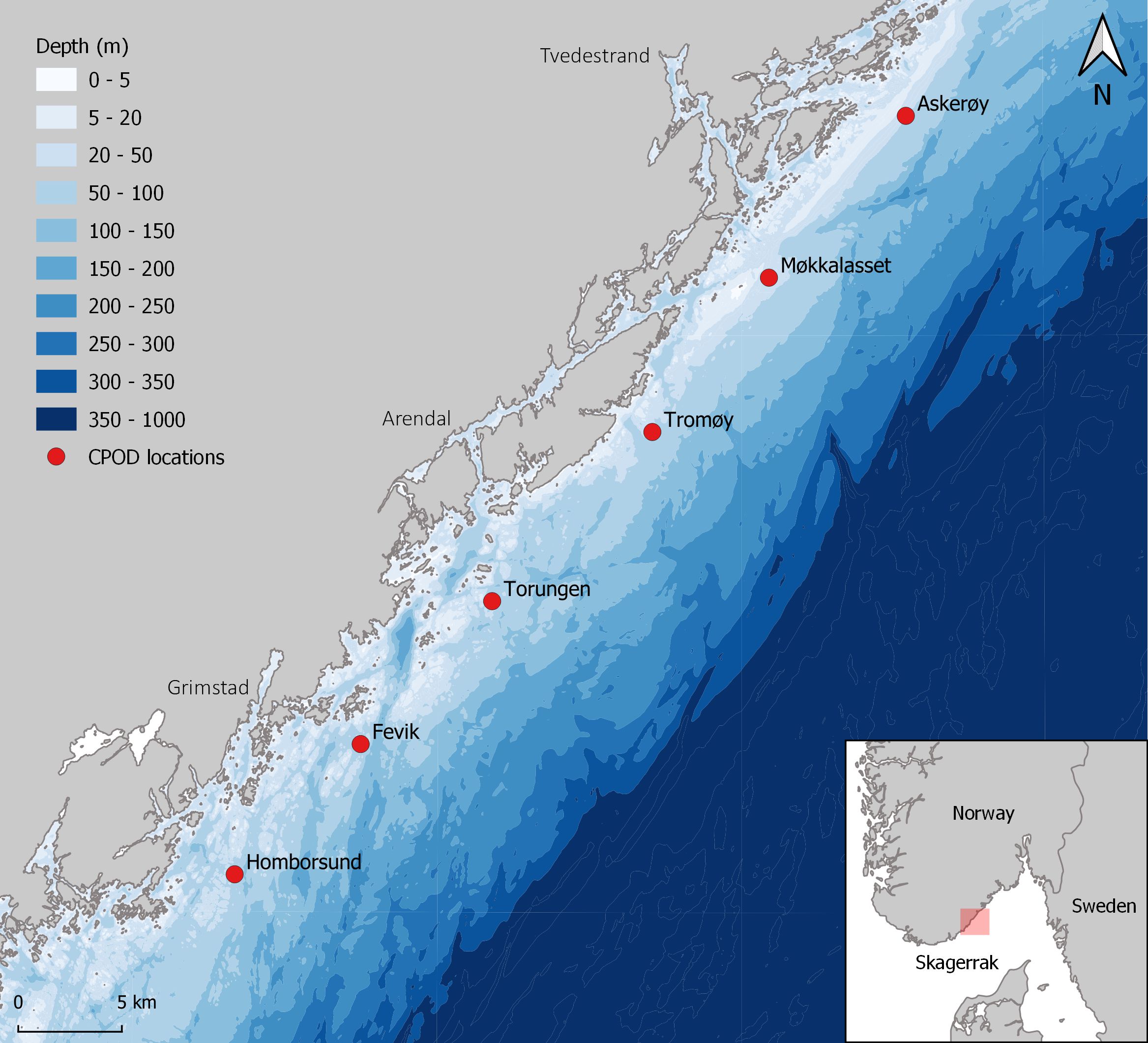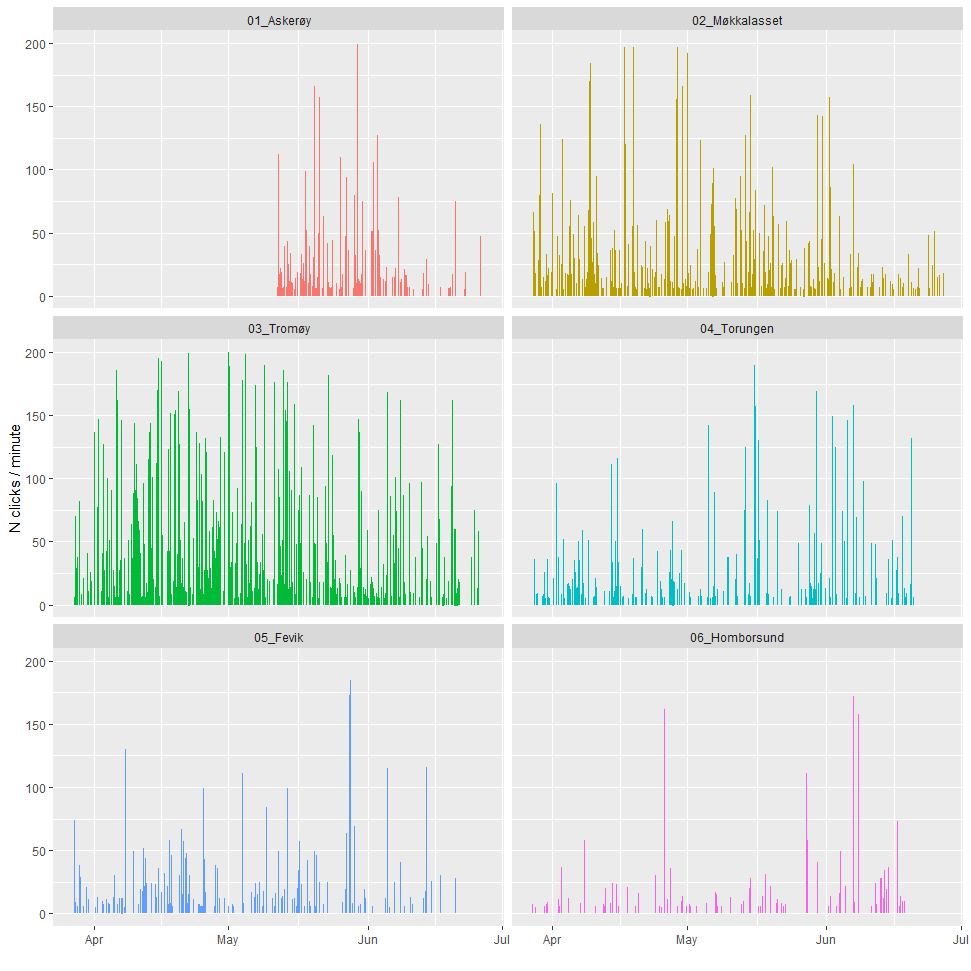Using sound to monitor harbour porpoises

The harbour porpoise is a small cetacean of about 1.5 meters. Here in Førdefjorden, Norway, on an earlier occasion.
Photo: Anders Neteland / Neteland Production / Institute of Marine ResearchPublished: 28.08.2023 Updated: 29.08.2023
The Institute of Marine Research (IMR) has started monitoring porpoises in the Skagerrak.
"Our goal is to map the spatial and seasonal distribution of harbour porpoises in the area" explains IMR researcher Carla Freitas.
Ecological importance and bycatch threats
The harbour porpoise is one of the few cetacean species occurring along the Norwegian Skagerrak coast.
“By feeding on small pelagic fish, harbour porpoises likely provide key ecological functions in the Skagerrak ecosystem, which in the past included a larger diversity and biomass of top predators," says Freitas.
Top predators are an important part of a healthy, well-functioning ecosystem.
But there are challenges for the porpoises – both here and elsewhere. Because they inhabit coastal waters, they are particularly vulnerable to bycatch on fisheries, such as coastal gillnets.
The main reason why we are monitoring porpoises in southern Norway is to gain knowledge to support management decisions and take care of the population in the best possible way.
In addition, this knowledge may be important when planning marine protected areas.

Listening to harbour porpoise clicks
Harbour porpoises monitoring is undertaken using passive acoustics – i.e., using hydrophones from buoys and boats.
Harbour porpoises produce echolocation clicks for feeding and orientation. Hydrophones such as CPODs (Continuous Porpoise Detectors) record these sounds automatically. The system recognizes the clicking of porpoises, dolphins, and other toothed whales.
The first results are promising
In spring 2023, researchers deployed six CPODs in Raet National Park and adjacent areas in southern Norway.
The devices are on loan from the Swedish Agency for Marine and Water Management and will collect data for one year.

The first results are promising.
"We have now retrieved the information collected during the first three months and are positively surprised by the number of detections," smiles the marine scientist.
The results will be further analyzed, and in good research style linked with other sources of information, such as the results from this year's visual surveys.
